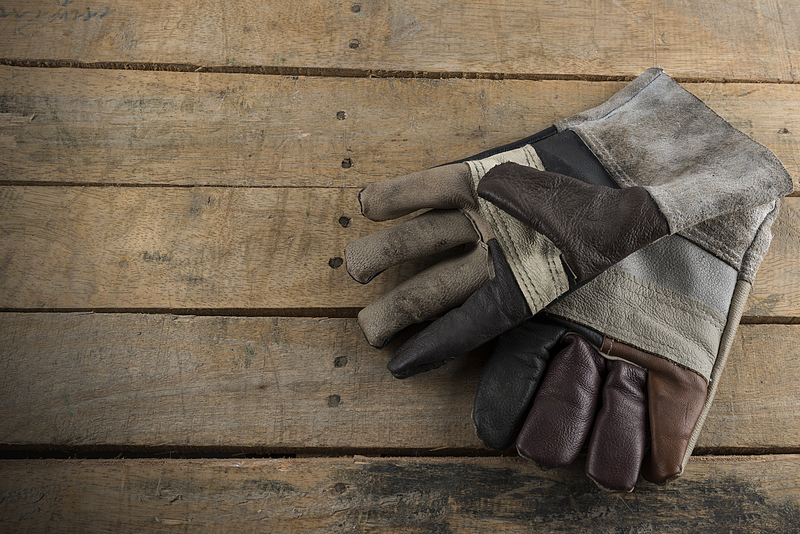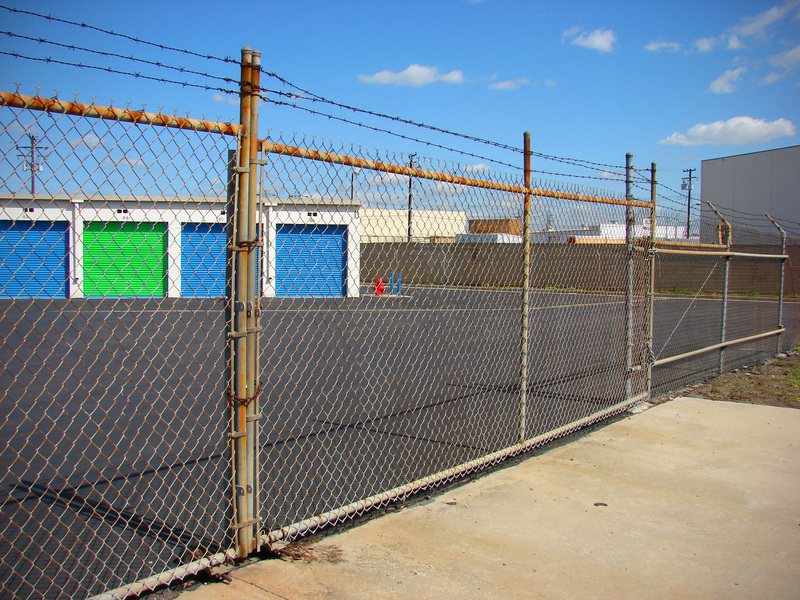Hassle-Free Bed and Mattress Moving Tips
Posted on 07/06/2025
Hassle-Free Bed and Mattress Moving Tips: The Ultimate Guide
Whether you're moving across town or to a new city, relocating your bed and mattress can be one of the trickiest tasks on your moving checklist. If not done properly, you could risk damaging your expensive mattress, scuffing walls, or even injuring yourself. In this comprehensive article, we unveil a collection of bed and mattress moving tips to make your transition as seamless as possible. Ready to ensure your bed arrives at your new home in perfect condition? Read on for a stress-free move!

Why Careful Mattress and Bed Moving Matters
Many people underestimate the importance of moving their beds and mattresses with care. Mishandling these items can lead to:
- Damage to the mattress support or bed frame, affecting comfort and longevity
- Stains, tears, or deformation of the mattress
- Personal injury from improper lifting
- Inconvenience that makes settling into your new home tougher
Proper bed and mattress moving provides reassurance, ensuring your investment stays intact and your first night in your new place is restful. Below are essential steps and tricks to make the process hassle-free.
Planning for Success: Pre-Move Preparation
1. Create a Moving Checklist
Begin by making a detailed list of everything you need to accomplish for a smooth transition. Include:
- Packing and disassembling bed frames
- Acquiring mattress bags or covers
- Gathering moving supplies like furniture sliders, straps, and tools
- Scheduling moving help or hiring professional movers if needed
2. Measure Your Bed and Pathways
Before moving day, measure your mattress, bed frame, and all entryways or hallways through which you'll move the items. This avoids surprises--like your box spring getting stuck in a stairwell--on moving day.
3. Gather Required Supplies
Having the right tools on hand is essential. For an efficient mattress relocation, you'll need:
- Mattress bag or cover: Protects from dust, dirt, and moisture
- Moving straps or rope: Make carrying easier and safer
- Tool kit: For disassembling frames
- Bubble wrap or moving blankets: Shield bed parts from scratches
- Dolly or hand truck: Especially important for heavier items or longer moves
- Tape and markers: For labeling and securing bags or coverings
Disassembling Your Bed Frame
Take photos as you disassemble your bed--especially if it's complex! Snap shots of each stage so you're not lost during reassembly. Keep all hardware (screws, bolts, nuts) in a labeled bag or container.
- Remove bedding and pillows first. Wash or pack them in sealed bags to avoid dust.
- Detach the mattress and box spring. Set aside in a protected area.
- Unscrew headboards, footboards, and rails carefully.
- Protect all wood and metal pieces with moving blankets.
Some bed frames require special tools. Always consult your assembly manual or look up your bed's model online before starting.
Packing Your Mattress: The Right Way
Why Use a Mattress Bag?
Mattress bags are durable, waterproof covers designed specifically for moving and storage. They safeguard against dust, stains, and moisture. Most home improvement stores sell these in standard, queen, and king sizes. Never transport a mattress without proper protection!
How to Bag Your Mattress
- Place the mattress flat on the ground and slide the open end of the bag over it.
- Once inside, seal the inch with heavy-duty packing tape to prevent debris from entering.
- For memory foam mattresses, make sure not to bend or fold sharply, as this can damage the foam.
Handling Different Mattress Types
- Innerspring and hybrid mattresses: Can be moved standing on their side, but never folded.
- Memory foam and latex mattresses: Should always be kept flat to avoid irreversible damage.
- Adjustable beds: Follow the manufacturer's moving instructions--some parts may need removal.
Transporting Bed and Mattress: Common Approaches
DIY Moving vs. Hiring Professionals
Should you move your bed and mattress by yourself, or call in the experts? Consider these factors:
- Distance: Short local moves are easier to manage yourself; long-distance relocations may be safer with professional movers.
- Experience: If you haven't moved large furniture before, pros can prevent damage and injuries.
- Available help: Mattresses are bulky and often require two or more people to move safely.
- Equipment: Not everyone owns a large enough vehicle or the right moving gear.
Loading and Securing in the Truck
- Lay the mattress flat whenever possible. Placing heavy objects on top may cause sagging.
- Use ratchet straps or rope to secure the mattress and bed frame pieces against shifting.
- Keep the mattress upright along a wall if there isn't enough space for laying flat, but avoid folding.
- Cushion fragile parts with moving blankets.
Getting Around Tight Corners, Doors, and Stairs
Moving beds and mattresses through tight spots is often challenging. Here's how to tackle it with ease:
- Remove all doors (temporarily): If a door is making an entryway too narrow, pop it from the hinges for extra clearance.
- Stand mattresses on the side and gently bend (if allowed): But avoid folding memory foam or spring mattresses--check manufacturer limits.
- Cushion wall corners with towels or cardboard: Protect both your home and furniture from scratches.
- Take it slow: Rushing leads to accidents!
Tip: Don't forget to check stairwell clearances, shared apartment hallways, and elevator dimensions if applicable.
Reassembling Your Bed at Destination
Clean and Inspect
- Vacuum and dust your mattress and bed frame before setting up, especially if they picked up debris during the move.
- Inspect for damage: Check all parts before starting reassembly. Look for broken slats, cracked rails, or torn fabric.
Follow Your Assembly Photos and Manual
- Use your earlier photos as references during reassembly.
- Organize screws and hardware before starting to avoid confusion.
- Ask for help--mattresses are best handled by two people.
Special Considerations for a Hassle-Free Bed Move
Moving Adjustable and Platform Beds
Some modern beds have complex mechanisms or integrated storage. Read manufacturer guidelines before attempting to disassemble; some designs require careful handling or special tools.
- Disconnect electronics: For power bases, unplug and wrap cords securely to avoid damage.
- Remove drawers or storage bins: Pack these separately to lighten the frame.
Moving in Rain or Extreme Weather
- Wait for a clear day if possible. If rain is unavoidable, use tarps in addition to mattress covers to avoid moisture damage.
- Cover truck beds or trailers: Keep everything dry, including wooden frames that can warp if wet.
Mattress Disposal or Donation
If your mattress is due for an upgrade, moving is a great time to consider donation or recycling. Many charities and recycling centers accept gently used mattresses--but always call ahead to confirm guidelines.
- Arrange for pickup: Some organizations offer collection from your home.
- Follow local disposal rules: Laws vary by location and some areas have special mattress recycling programs.
Frequently Asked Questions About Bed and Mattress Moving
Can You Fold a Mattress to Move It?
Traditional innerspring mattresses should never be folded, but some foam and hybrid models may be gently bent if the manufacturer allows it. Check your mattress warranty before attempting.
What's the Best Truck Size for Moving a Bed?
Most beds and mattresses will fit safely in a standard moving van or 10-15 foot truck. If you have multiple beds, opt for a larger size to lay mattresses flat and avoid stacking.
How Many People Should Assist with Mattress Moving?
At least two people are needed. Mattresses are awkward and heavy--more hands prevent injury and reduce the risk of dropping or dragging the mattress.
Pro Moving Hacks for an Easy Bed and Mattress Move
- Wear gloves: Protect your hands from rough edges and dust.
- Use furniture sliders: Essential for moving beds over hard floors or carpets without damage.
- Label everything: Mark hardware bags and frame pieces for easy placement at your new home.
- Reassemble in the bedroom: Build your bed in its final location; moving an assembled frame through tight spaces can be impossible.
- Let mattresses air out: After unbagging, allow your mattress to breathe for a few hours to eliminate any musty or plastic odors.

Bonus Tips: Mattress Protection During Storage
- Store mattresses flat, not upright, to prevent sagging or misshaping during long-term storage.
- Use a climate-controlled unit to avoid mold, mildew, or moisture damage.
- Avoid stacking heavy objects on the mattress, which can deform internal materials over time.
Conclusion: Move Your Bed and Mattress Without Stress
Moving your bed and mattress doesn't have to be a headache. By prepping correctly, using proper packing supplies, and following professional moving advice, you can ensure your sleeping setup arrives safe and ready for your new beginning. Prioritize mattress protection, careful handling, and organized reassembly for a truly hassle-free bed and mattress moving process.
Remember: Whether you're a DIY enthusiast or prefer to hire moving professionals, these practical bed and mattress relocation tips will help you minimize risk, save time, and enjoy a restful first night in your new home.
Ready for your next move? Bookmark this ultimate guide and share it with friends or family about to tackle the same challenge!



